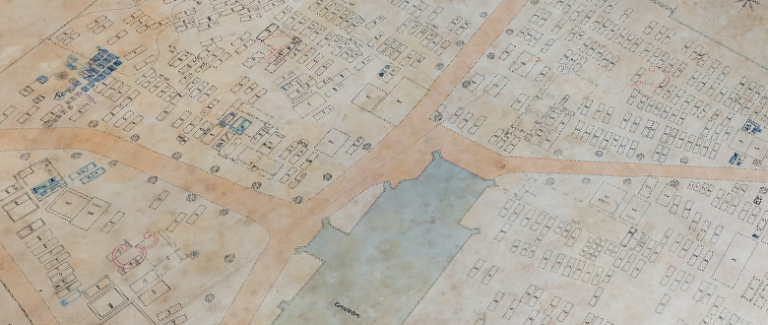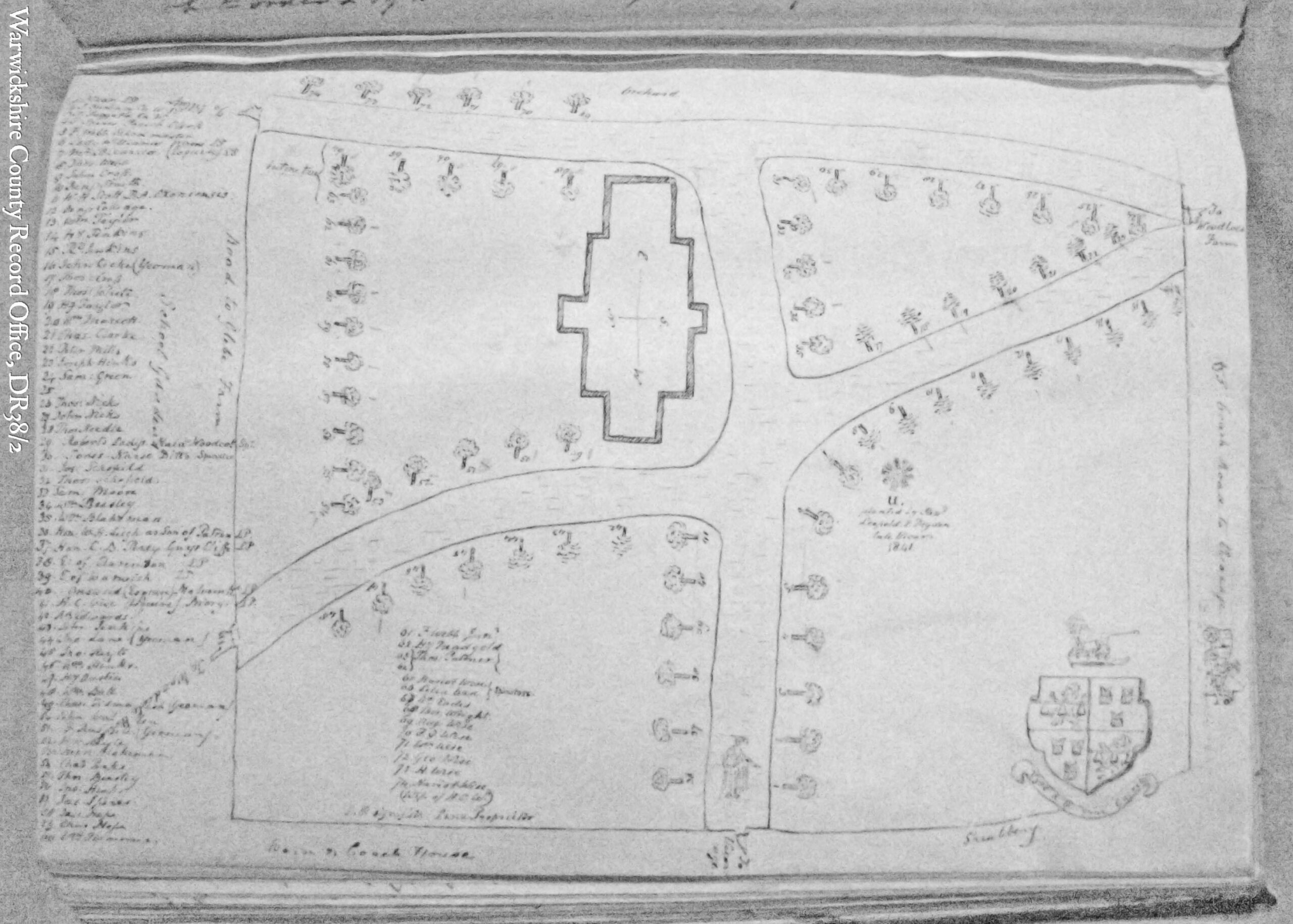
The Churchyard Plan
In the Millennium/Upper Room of the church, there hangs a reproduction of the 1921 Graveyard Plan, which was recently rediscovered in a cupboard in the vestry.
The original was badly water-damaged and mouldy. It was conserved by Ogilvie Vaile in Birmingham and photographed by Sally Evans.
Using the numbers on this plan together with the records held in the Burial Registers, it is possible to find the graves on many of those buried in the churchyard – even if no headstone exists or the engraving is almost illegible.
Why are there lime trees lining the paths?
It is recorded in the Parish Register that on the second Sunday in December 1843 the following address was delivered by the Vicar, , to the young men of the Parish who were assembled in the School Room:


“Christian friends. I feel sure that the greater number of you, if not all, feel a pride and interest in yr. Parish Church and in every thing connected with it, your Fathers before you have worshipped in that house, their bones lie mouldering in the dirt surrounding it, in a few short years your bones will in all probability lie mingled with their’s, there to await the general Resurrection. In connection with this subject, I wish to make a suggestion to you, which will, I think, if carried out, tend to give you an increased interest in your Church & Church yard, and which will carry down your names to your Children & Children’s Children & for this purpose I have now called you together. The Suggestion is this, that every man in the parish, who may so desire, purchase a lime tree, & plant it himself in the Church yard. This tree he mt. always consider his own; he wd. with pride watch its growth, and when in years, he mt. say to his Children, this is the tree which I bought & planted when young, do you look after it when I am dead & give and hand it down as a legacy to yr. posterity.”
“In consequence of this suggestion the trees were planted, & in what order & by whom the subjoined map will shew.”
There is a full listing on the hand drawn plan of those who purchased and planted the original seventy-four trees. Among the names are the Earls of and , the Vicar, Churchwarden and Parish Clerk as well as the School Master and his son and one Charles Tidmarsh (Yeoman). A total of eleven trees were provided by members of the Wise family of Woodcote and their staff and others by both the rich and poor of the community.
An interesting footnote to the entry in the Register is:
“The tree No 36 was not planted by the as here stated for he receiving many young & distinguished Visitors at the Abbey was not able to come over to Wooton for that purpose & thus returned to pursue his studie, at Cambridge without having planted his tree: whereupon his 2nd brother Edward Chandos accompanied by his preceptor Wm.Young the eloquent & learned Curate of Ashoe did come over & perform in the Ch: yd. what instead his elder brother shd. have done.”
Thirty-seven of the trees have been ‘lost’ in the past 160+ years and some that we see today are undoubtedly replacements, but personally I still like the idea that so many could be encouraged to support their church and churchyard and that to subscribe to a tree would “… carry down your names to your Children & Children’s Children“!
Lesley Eldridge
Leek Wootton History Group
This article was originally published in the Leek Wootton Link, May 2008
A list of the benefactors of each original tree is available to view in the Book of Benefactors, which is kept on the litany desk in the church.
